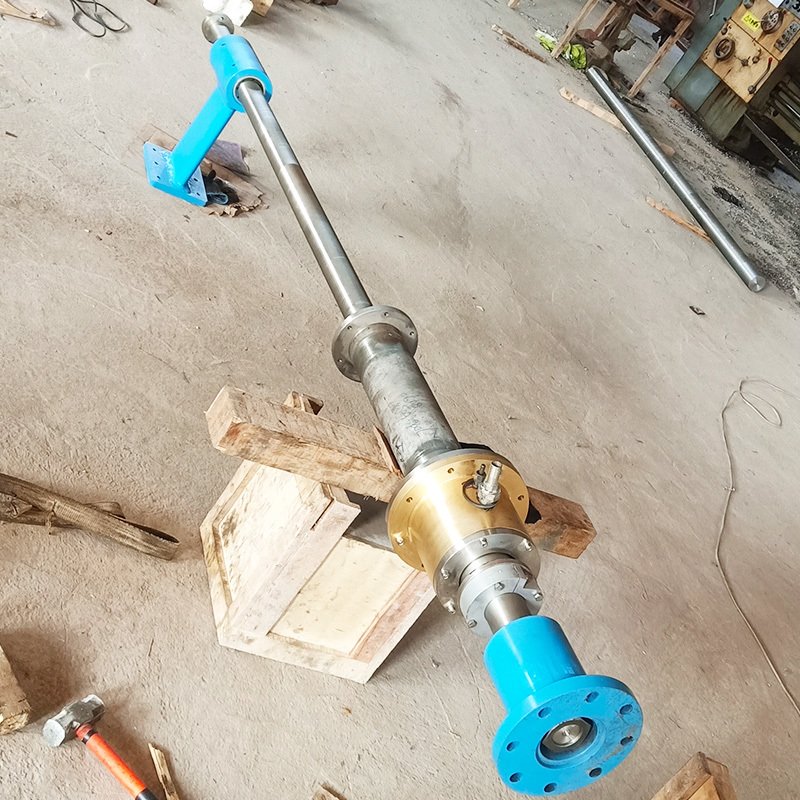Common Issues with Propeller Shafts and How to Fix Them: A Comprehensive Guide
Release Time:
May 21,2025
Common Issues with Propeller Shafts and How to Fix Them: A Comprehensive Guide Table of Contents 1. Introduction to Propeller Shafts 2. Importance of Propeller Shafts in Marine Transportation 3. Common Issues with Propeller Shafts 3.1 Excessive Vibration 3.2 Corrosion and Wear 3.3 Misalignment Problems 3.4 Cavitation
Common Issues with Propeller Shafts and How to Fix Them: A Comprehensive Guide
Table of Contents
- 1. Introduction to Propeller Shafts
- 2. Importance of Propeller Shafts in Marine Transportation
- 3. Common Issues with Propeller Shafts
- 3.1 Excessive Vibration
- 3.2 Corrosion and Wear
- 3.3 Misalignment Problems
- 3.4 Cavitation
- 3.5 Bearing Failure
- 4. Diagnosing Propeller Shaft Issues
- 5. How to Fix Common Propeller Shaft Issues
- 5.1 Balancing the Propeller Shaft
- 5.2 Replacing Damaged Components
- 5.3 Realigning the Shaft
- 5.4 Preventing Cavitation
- 5.5 Regular Maintenance Practices
- 6. Frequently Asked Questions (FAQs)
- 7. Conclusion
1. Introduction to Propeller Shafts
Propeller shafts play a crucial role in the marine transportation industry. They serve as the conduit between the engine and the propeller, transferring torque and enabling vessels to navigate through water efficiently. Understanding the common issues related to propeller shafts is essential for maintaining optimal performance and longevity of marine vessels.
2. Importance of Propeller Shafts in Marine Transportation
The **importance** of propeller shafts cannot be overstated. They are fundamental components in the propulsion system of boats and ships, directly affecting maneuverability and fuel efficiency. A well-functioning propeller shaft ensures that the vessel operates smoothly, minimizing wear and tear on other components. In contrast, issues with the propeller shaft can lead to severe operational problems, increased maintenance costs, and potential safety risks.
3. Common Issues with Propeller Shafts
Understanding the **common issues** that arise with propeller shafts is essential for any vessel owner or marine engineer. Below, we delve into some of the most frequently encountered problems.
3.1 Excessive Vibration
Excessive vibration can be one of the most noticeable symptoms of a failing propeller shaft. It often indicates an imbalance in the shaft or issues with the propeller itself. When the shaft rotates, any irregularities can cause vibrations that may lead to further damage over time.
3.2 Corrosion and Wear
Corrosion is another prevalent issue, particularly for vessels operating in saltwater environments. The propeller shaft is exposed to harsh conditions, which can lead to rust and decay, compromising its structural integrity. Regular inspections are critical to identify early signs of corrosion.
3.3 Misalignment Problems
Misalignment occurs when the propeller shaft is not properly aligned with the engine. This can lead to uneven wear on bearings and seals, resulting in decreased performance and potential failure. Factors contributing to misalignment include installation errors, wear over time, or damage from impact.
3.4 Cavitation
Cavitation is a phenomenon where low-pressure areas form in the water around the propeller, leading to the formation of vapor bubbles. When these bubbles collapse, they create shock waves that can damage the propeller and the shaft itself. This can be a serious issue that requires immediate attention.
3.5 Bearing Failure
Bearings support the propeller shaft and allow it to rotate smoothly. However, they can often fail due to excessive load, insufficient lubrication, or wear and tear. Bearing failure can lead to significant operational issues, including vibrations and potential shaft damage.
4. Diagnosing Propeller Shaft Issues
Proper diagnosis of propeller shaft issues is essential to ensure timely repairs and avoid catastrophic failures. Regular inspection and maintenance can help identify these problems early on. Key steps in diagnosing these issues include:
1. **Visual Inspection**: Look for signs of corrosion, wear, or damage. Check the alignment and condition of the bearings.
2. **Vibration Analysis**: Utilize vibration analysis tools to measure any abnormal vibrations that could indicate imbalances or misalignment.
3. **Ultrasonic Testing**: This technique can detect sub-surface flaws and fatigue in the propeller shaft.
4. **Alignment Checks**: Use precision measuring tools to ensure that the shaft is aligned correctly with the engine.
5. How to Fix Common Propeller Shaft Issues
Once issues have been diagnosed, it is essential to act swiftly to rectify them. Here are some effective methods to address common propeller shaft problems:
5.1 Balancing the Propeller Shaft
If excessive vibration is detected, balancing the propeller shaft may be necessary. This can involve adding or removing weight from the shaft to ensure even distribution during rotation. Professional balancing services are often recommended for optimal results.
5.2 Replacing Damaged Components
In cases of significant damage due to corrosion or wear, it may be necessary to replace components of the propeller shaft system. This includes bearings, seals, or even the entire shaft, depending on the extent of the damage. Always use high-quality replacement parts to ensure durability.
5.3 Realigning the Shaft
To rectify misalignment, the shaft may need to be realigned. This process involves adjusting the positioning of the shaft in relation to the engine and other components. Precision tools and techniques are essential for achieving proper alignment.
5.4 Preventing Cavitation
To prevent cavitation, it is crucial to maintain optimal operational speeds and ensure the correct design of the propeller. Additionally, regular inspections and maintenance can help mitigate conditions that lead to cavitation.
5.5 Regular Maintenance Practices
Regular maintenance is vital for the longevity of propeller shafts. This includes routine inspections, cleaning, lubrication, and prompt attention to any identified issues. Following a detailed maintenance schedule can significantly reduce the likelihood of serious problems occurring.
6. Frequently Asked Questions (FAQs)
What causes excessive vibration in propeller shafts?
Excessive vibration can be caused by imbalances in the propeller shaft, misalignment, or damage to the propeller itself. Regular inspections can help identify these issues before they lead to significant damage.
How often should I inspect my propeller shaft?
It is recommended to inspect your propeller shaft at least once a year or more frequently if the vessel operates in demanding conditions. Regular maintenance is key to preventing serious issues.
Can I repair a corroded propeller shaft myself?
While minor corrosion can sometimes be treated with anti-corrosion products, it is often best to consult a professional for extensive damage to ensure the safety and reliability of the vessel.
What are the signs of bearing failure in propeller shafts?
Signs of bearing failure may include excessive noise, vibrations, or a decrease in performance. If you notice any of these symptoms, it’s crucial to investigate further.
How can I prevent cavitation in my vessel?
To prevent cavitation, ensure your propeller is properly designed for your vessel and maintain optimal operating speeds. Regular maintenance and inspections can also help mitigate conditions that lead to cavitation.
7. Conclusion
In conclusion, understanding and addressing common issues with propeller shafts is essential for maintaining the performance and safety of marine vessels. By diagnosing problems early and implementing effective solutions, vessel owners can prevent serious damage and ensure the longevity of their equipment. Regular maintenance, inspections, and awareness of the signs of trouble will keep your propeller shafts functioning optimally, thus enhancing your marine transportation experience.
Keywords:
More information



